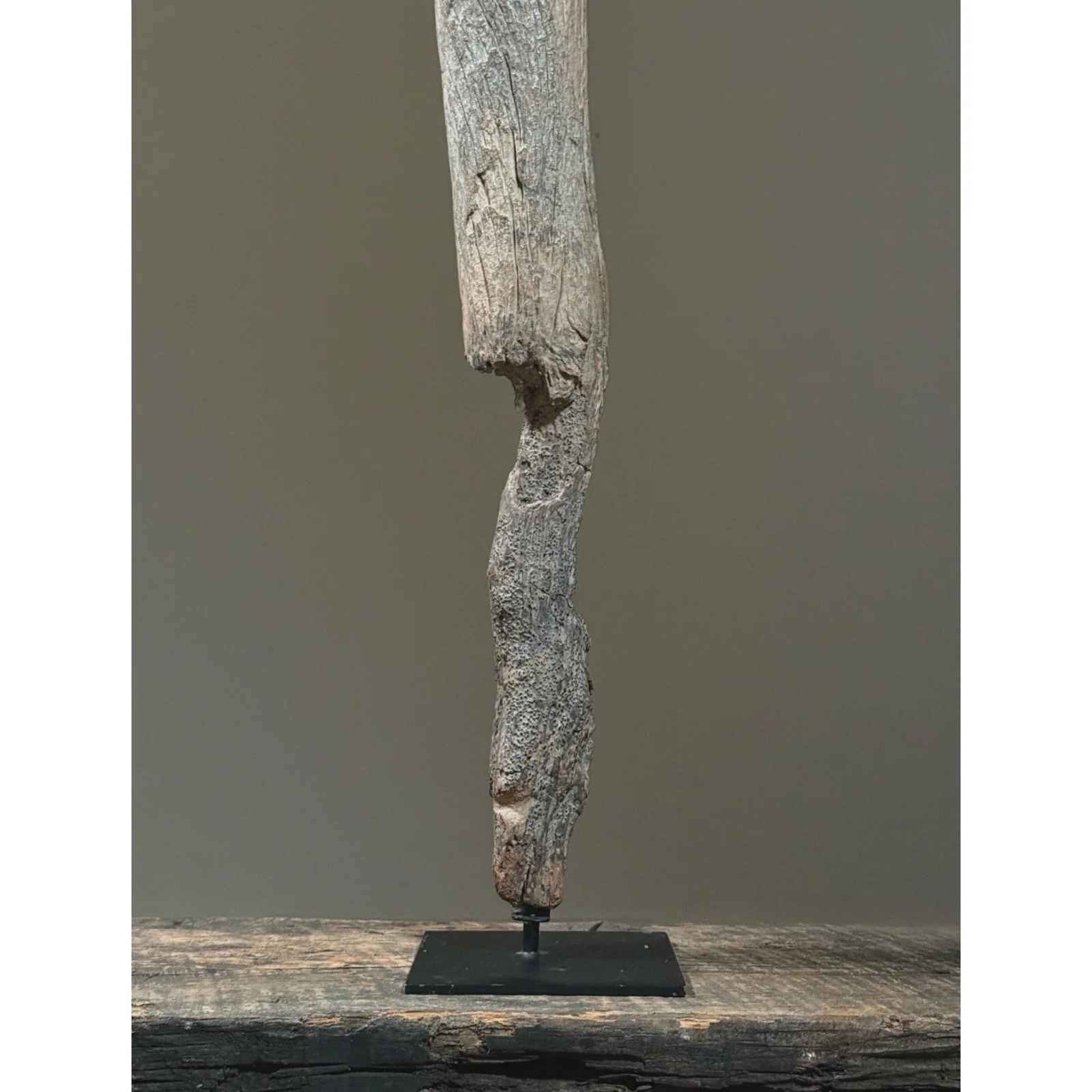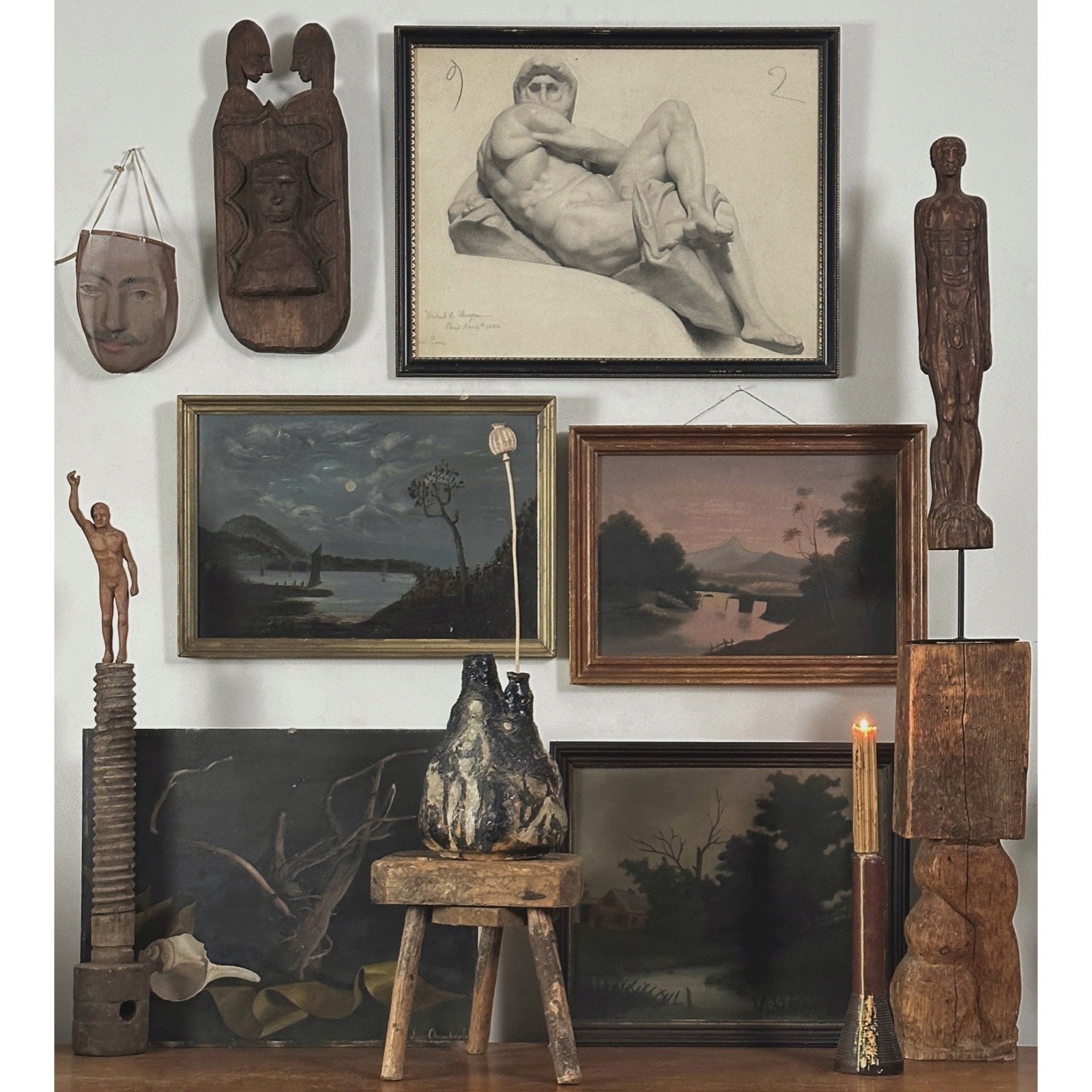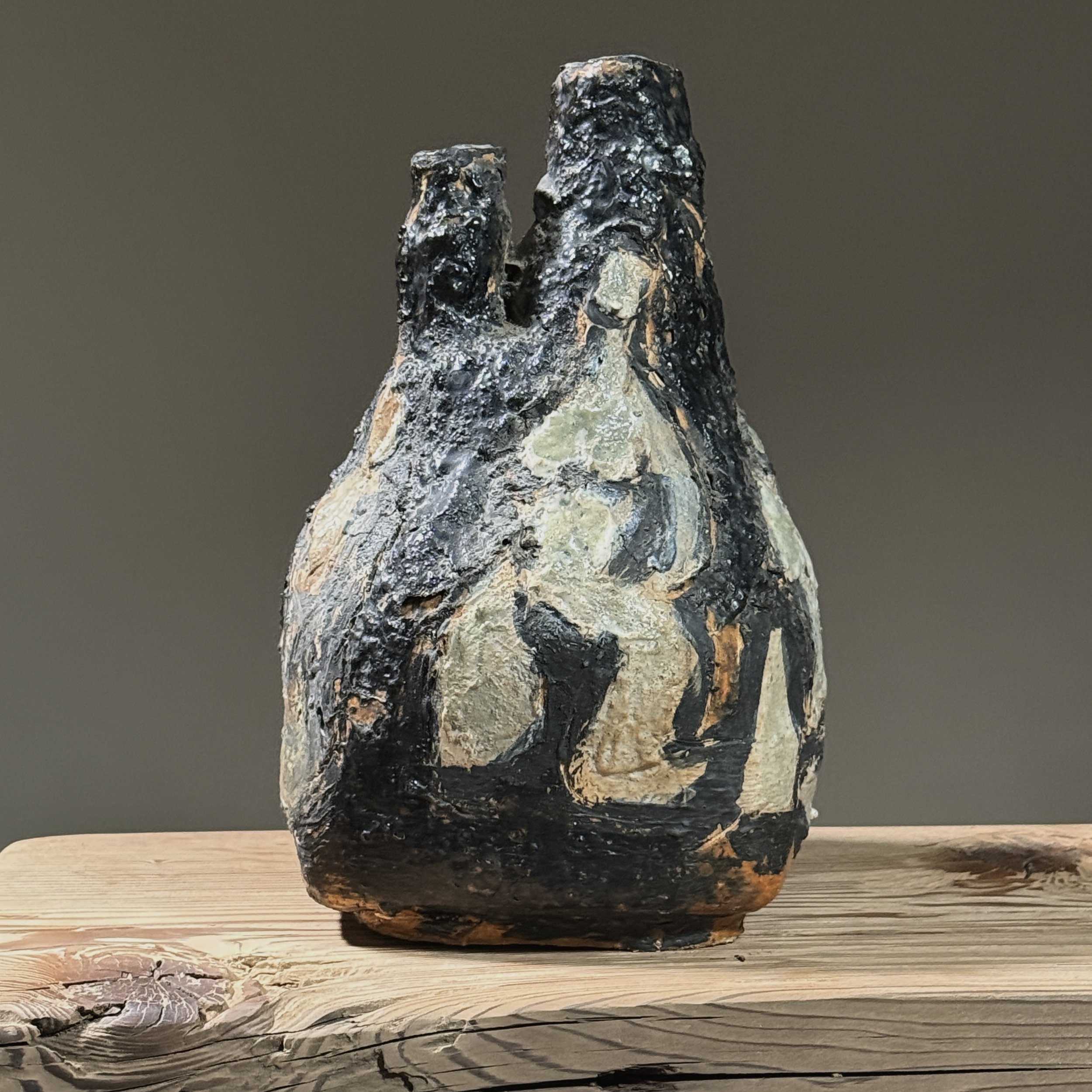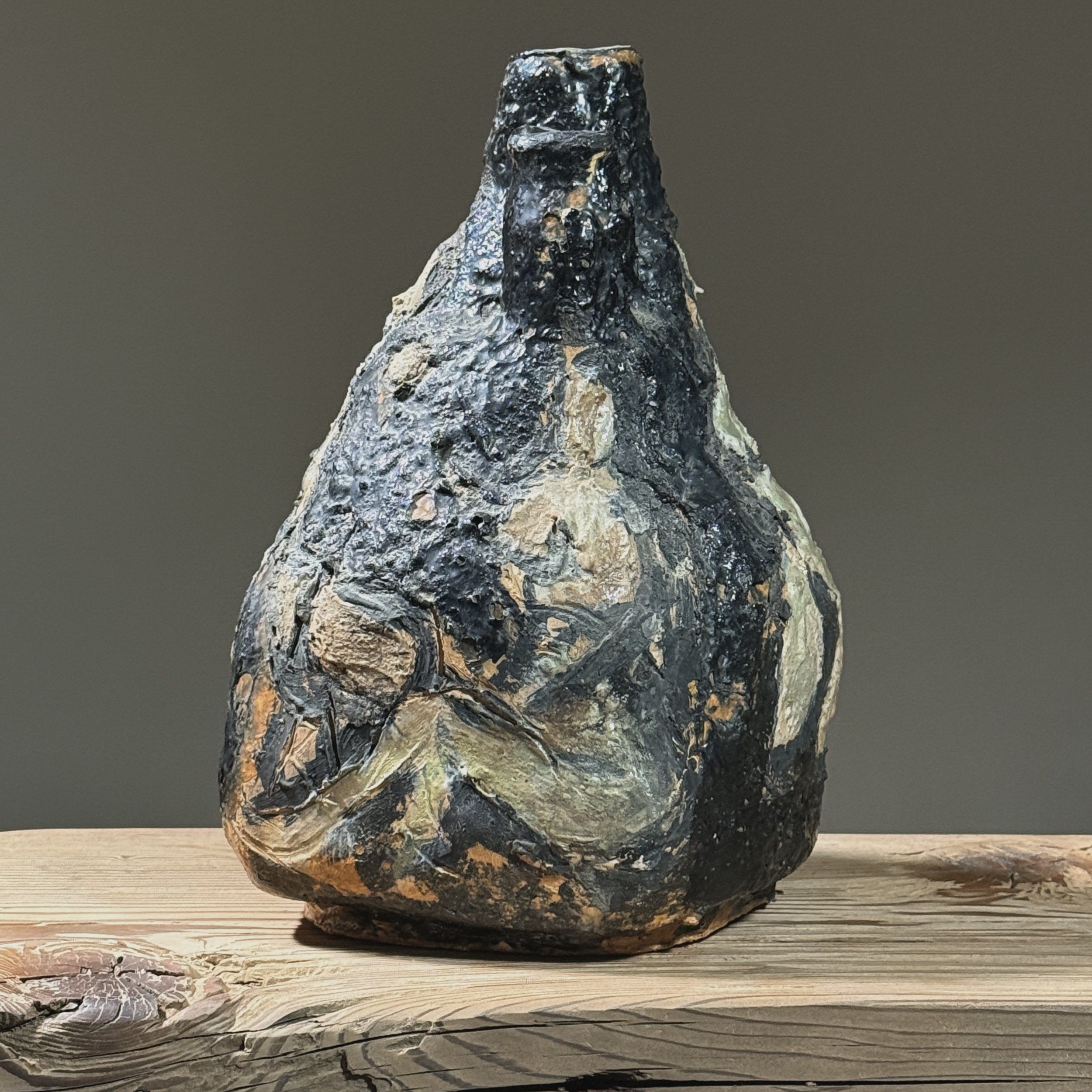 Image 1 of 7
Image 1 of 7

 Image 2 of 7
Image 2 of 7

 Image 3 of 7
Image 3 of 7

 Image 4 of 7
Image 4 of 7

 Image 5 of 7
Image 5 of 7

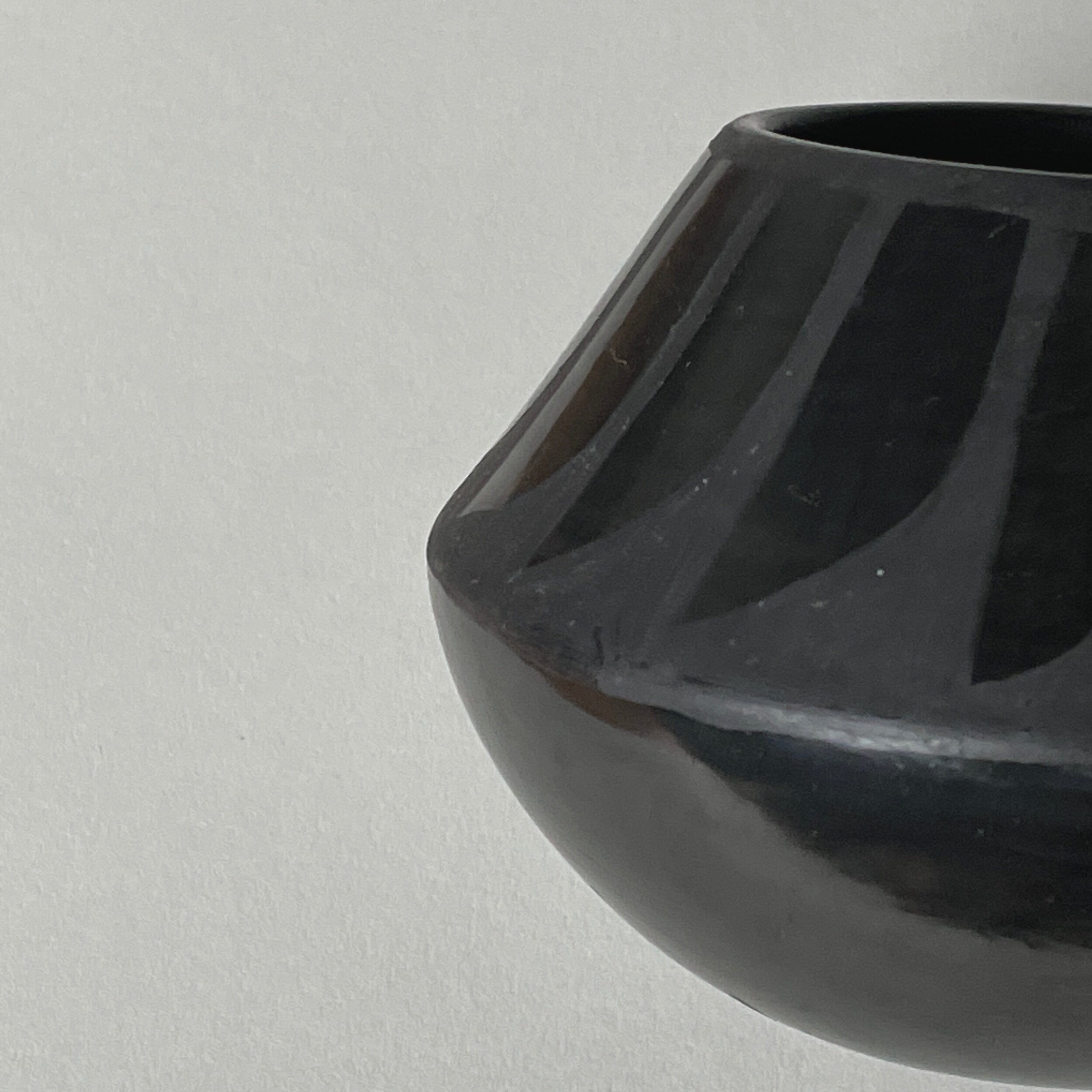 Image 6 of 7
Image 6 of 7

 Image 7 of 7
Image 7 of 7








Lupita Martinez (1918-2006) Matte Blackware Shoulder Vase with Burnished Feathers, Signed (ca. 1970)
Lupita Martinez (1918-2006) Matte Blackware Shoulder Vase with Burnished Feathers, Signed (ca. 1970). Burnished feathers against a matte black background along the top with a burnished bottom half. In good condition with scuffs and scratches conducive with age. Signed on the bottom.
Size: 3.75”H x 5.25”D
San Ildefonso Pueblo is famous for its blackware pottery vessels. Lupita Martinez was most known for her collectible black-on-black bowls, jars and bird figurines.
This amazing effort to revive the historic blackware technique was led by famous potter Maria Martinez who added a flair of her own Lupita Martinez (1918- 2006). Maria's husband Julian added another layer of liquid clay design thus creating a more modern version called black-on-black. Lupita Martinez became part of this revival since was a niece of Maria and Julian Martinez through marriage to the son of Julian's brother, Louis Martinez.
Lupita Martinez (1918- 2006) was active in pottery making from 1935 until the 1980s.
San Ildefonso pottery, immortalized by Maria Martinez, did more than transform an industry and pueblo; it has become an art form reserved for museums worldwide. From Maria and Julian Martinez to Blue Corn, Popovi Da, Tse-Pe, and countless other artisans San Ildefonso black-on-black pottery has become a form of economic sustenance and a high expression of art.
Located 23 miles north of Santa Fe, New Mexico, San Ildefonso pueblo has long been considered the epicenter for the pueblo pottery movement. This is the birth place of Maria Martinez and the newer form of San Ildefonso pottery. The famous black-on-black pottery, once a token tourist piece, now graces the highest mantles and shelves of museums worldwide.
A growing interest in Native American by anthropologists and archeologists of the Smithsonian Institution led to the excavation of Avanyu black-on-black pottery and subsequent attempt to emulate the pottery by Maria Martinez. The attempt to emulate an older style spawned a new form of firing pottery.
Lupita Martinez (1918-2006) Matte Blackware Shoulder Vase with Burnished Feathers, Signed (ca. 1970). Burnished feathers against a matte black background along the top with a burnished bottom half. In good condition with scuffs and scratches conducive with age. Signed on the bottom.
Size: 3.75”H x 5.25”D
San Ildefonso Pueblo is famous for its blackware pottery vessels. Lupita Martinez was most known for her collectible black-on-black bowls, jars and bird figurines.
This amazing effort to revive the historic blackware technique was led by famous potter Maria Martinez who added a flair of her own Lupita Martinez (1918- 2006). Maria's husband Julian added another layer of liquid clay design thus creating a more modern version called black-on-black. Lupita Martinez became part of this revival since was a niece of Maria and Julian Martinez through marriage to the son of Julian's brother, Louis Martinez.
Lupita Martinez (1918- 2006) was active in pottery making from 1935 until the 1980s.
San Ildefonso pottery, immortalized by Maria Martinez, did more than transform an industry and pueblo; it has become an art form reserved for museums worldwide. From Maria and Julian Martinez to Blue Corn, Popovi Da, Tse-Pe, and countless other artisans San Ildefonso black-on-black pottery has become a form of economic sustenance and a high expression of art.
Located 23 miles north of Santa Fe, New Mexico, San Ildefonso pueblo has long been considered the epicenter for the pueblo pottery movement. This is the birth place of Maria Martinez and the newer form of San Ildefonso pottery. The famous black-on-black pottery, once a token tourist piece, now graces the highest mantles and shelves of museums worldwide.
A growing interest in Native American by anthropologists and archeologists of the Smithsonian Institution led to the excavation of Avanyu black-on-black pottery and subsequent attempt to emulate the pottery by Maria Martinez. The attempt to emulate an older style spawned a new form of firing pottery.







